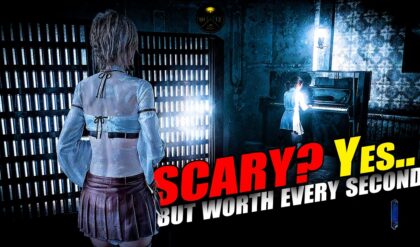A DNA bombshell in the Madeleine McCann case could turn everything upside down! 😲 Julia Faustyna’s shocking new test claims a link to the McCanns—but is it the truth or another twist? What did the genes really reveal? 🧬

The Madeleine McCann case, a heart-wrenching mystery since the three-year-old’s disappearance from Praia da Luz, Portugal, on May 3, 2007, has been reignited by a 23-year-old Polish woman named Julia Wandelt, also known as Julia Faustyna or Julia Wendell. In February 2025, Julia shared new DNA test results claiming a biological connection to Gerry McCann, Madeleine’s father, stirring global attention and controversy. These claims, alleging a 69.23% DNA match with crime scene evidence, have been met with skepticism by experts and dismissal by the McCanns. This article explores Julia’s assertions, the science behind them, and their place in a case that continues to captivate the world after 18 years.
The Madeleine McCann Case: A Global Enigma
Madeleine vanished from her family’s holiday apartment while her parents, Kate and Gerry McCann, dined nearby. The case sparked an unprecedented global search, with the McCanns’ campaign, findmadeleine.com, keeping hope alive. Early investigations by Portuguese police faced criticism for errors, such as failing to secure the crime scene. The McCanns were briefly suspects in 2007 but cleared in 2008. In 2020, German authorities named Christian Brueckner, a convicted sex offender, as the prime suspect, supported by phone records and 2025 discoveries like 64GB of digital data and children’s items. Amid these developments, Julia Faustyna’s DNA claims add a dramatic but contentious layer.
Julia Faustyna’s Journey: From Doubt to DNA
Julia first gained attention in February 2023 via her Instagram account @IamMadeleineMcCann, claiming she might be Madeleine due to physical similarities and memory gaps from childhood sexual abuse. She appeared on Dr. Phil, alleging her abuser resembled sketches of Madeleine’s suspected abductor. DNA tests in April 2023 confirmed her Polish, Lithuanian, and Romanian heritage, ruling out a direct link to Madeleine, who would be 22 in 2025 (Julia is 23). Julia apologized to the McCanns, citing regret for causing distress, but faced death threats and online abuse.
In February 2025, Julia reemerged on Instagram (@amijuliawandelt) with new DNA results, claiming analysis by a “world expert” (sometimes named Dr. Monte Miller) showed a 69.23% match with crime scene samples—hair and saliva from the McCann apartment. She asserted the results suggest she is “part British, part Irish” and that Gerry McCann could be her biological father. Julia also claimed similarities in “eyes, teeth, and voice” with Madeleine, supported by facial recognition technology (Face++). However, the McCanns and her Polish parents have refused DNA tests, and her claims of accessing crime scene DNA raise serious doubts.
The DNA Claims: Science or Speculation?
Julia’s 2025 DNA results are central to her narrative but face significant scrutiny. She claims an unnamed expert analyzed her DNA against crime scene samples, finding a 69.23% match suggestive of a parent-child relationship with Gerry McCann. Dr. Monte Miller, a biochemist, reportedly stated, “The suspect is not the source of the DNA on the evidence, because their DNA is not fully established everywhere,” but noted a “specific pattern” indicating a “family connection.” Julia also cited her British-Irish ancestry, contradicting 2023 tests.
Forensic expert Suzanna Ryan, from Ryan Forensic, casts doubt on these claims. She notes the absence of laboratory accreditation, redacted report details, and the unlikelihood of Julia accessing 2007 crime scene DNA, as genealogical testing wasn’t standard then. Ryan suggests the 69.23% match likely compares two crime scene samples (e.g., hair and saliva from McCann family members present in the apartment), not Julia’s DNA. She warns the report could be fabricated, stating, “Anyone can re-type results subbing in whatever names they like.” The reference to a “suspect” in Miller’s analysis further implies a focus on crime scene evidence, not a direct comparison with Julia or the McCanns.
The claim of British-Irish ancestry contradicts Julia’s 2023 results, and her age discrepancy with Madeleine (23 vs. 22) undermines her narrative. Accessing crime scene DNA would require official channels, which Julia, a private citizen, likely lacks. Her reliance on an anonymous source and partial disclosures weakens credibility.
The Broader Investigation: Brueckner’s Shadow
While Julia’s claims grab headlines, the McCann investigation centers on Christian Brueckner. Phone records place him near Praia da Luz in 2007, and 2025 searches of his former cottage uncovered disturbing items like children’s swimsuits and possible bone fragments. German prosecutors believe Brueckner killed Madeleine, though no charges have been filed. His potential release in September 2025 adds urgency. Julia’s DNA claims, lacking official backing, are peripheral to this focus but reflect the case’s emotional pull.
Why the Claims Persist
Julia’s assertions stem from personal trauma. She told the BBC in 2023 that childhood abuse and memory gaps led her to question her identity, suspecting adoption. Her Polish family provided photos and a birth certificate, refuting her claims, but she persists, possibly driven by psychological factors or media attention. Her 2025 arrest for stalking the McCanns (,) suggests an obsession, as does her spokesperson’s claim that police ignored her DNA evidence despite a £20 million investigation.
Public fascination with Julia’s story reflects the case’s unresolved nature. The McCanns, enduring immense scrutiny, have dismissed her claims, refusing DNA tests. Their 2025 statement emphasizes their resolve to “leave no stone unturned,” but they view Julia’s assertions as a distraction.
Media and Public Reaction
Media outlets like Metro and Daily Mail (,) have amplified Julia’s claims, often with sensational headlines, but skepticism from experts like Ryan tempers the narrative. Social media fuels speculation, with some supporting Julia’s quest for identity while others condemn her for harassing the McCanns. The case’s emotional weight—evoking a parent’s worst fear—keeps such stories alive, even when evidence is thin.
Challenges and Limitations
Julia’s claims face significant hurdles:
Lack of Credibility: No accredited lab report or verified crime scene DNA access supports her results.
Inconsistencies: Her age, ancestry, and prior DNA tests contradict her 2025 claims.
Official Dismissal: The McCanns and police have not engaged, focusing on Brueckner.
Ethical Concerns: Julia’s actions, including her arrest, raise questions about her motives and mental health.
Re-analyzing crime scene DNA with modern tools could clarify the case but is unrelated to Julia’s claims, as her samples weren’t compared officially. The investigation’s focus on Brueckner and forensic evidence offers more promise.
The Path Forward
The McCann case hinges on tangible leads like Brueckner’s phone data and 2025 searches. Julia’s claims, while compelling to some, lack the substance to shift the investigation. Advances in DNA technology, such as those used in other cold cases, could revisit 2007 evidence, but Julia’s narrative appears driven by personal conviction rather than fact. The McCanns, supported by Operation Grange, continue their search, undeterred by distractions.
Conclusion
Julia Faustyna’s 2025 DNA claims have reignited debate in the Madeleine McCann case, but their lack of credibility and scientific backing limits their impact. The 69.23% match, unverified sources, and improbable access to crime scene DNA suggest speculation rather than truth. The McCanns, enduring 18 years of pain, remain focused on credible leads like Christian Brueckner. Julia’s story, rooted in trauma and a quest for identity, underscores the case’s emotional resonance but adds little to its resolution. As the investigation presses forward, the world awaits answers, hoping science and perseverance will finally uncover what happened to Madeleine.





